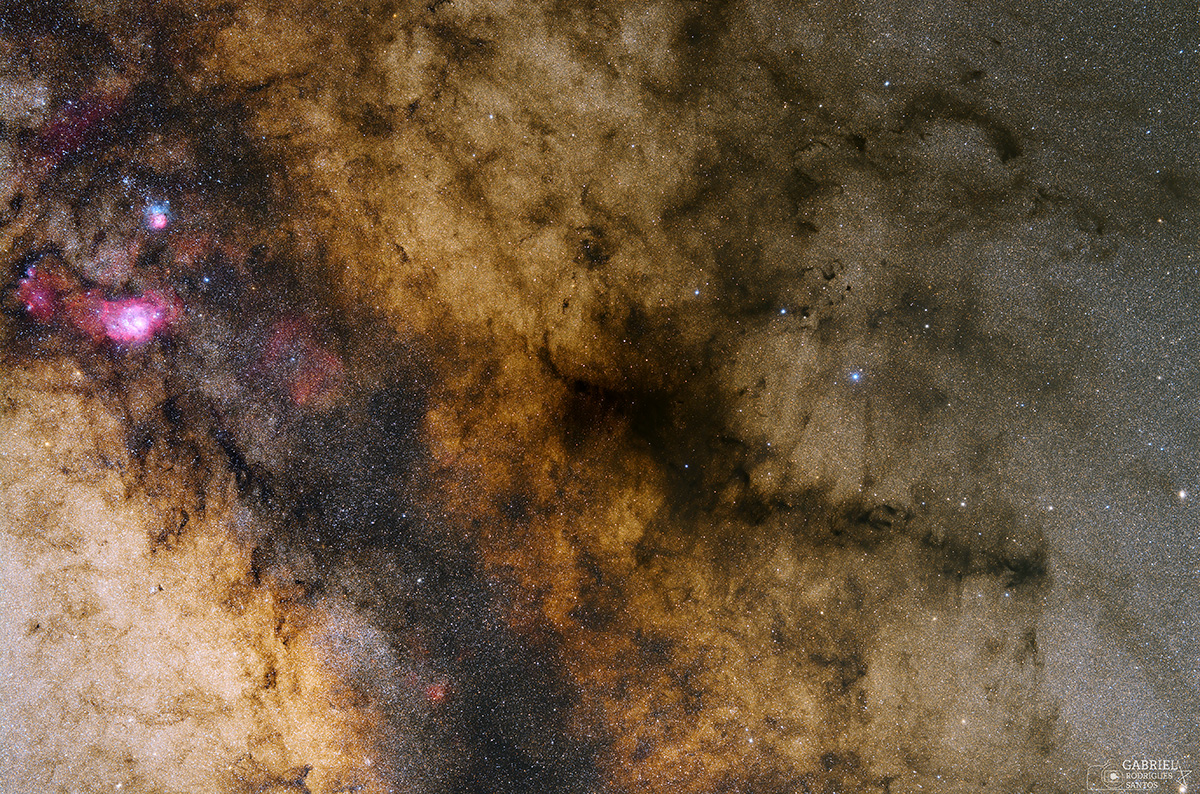2021年10月1日
The Central Milky Way from Lagoon to Pipe
Image Credit & Copyright: Gabriel Rodrigues Santos
Explanation: Dark markings and colorful clouds inhabit this stellar landscape. The deep and expansive view spans more than 30 full moons across crowded star fields toward the center of our Milky Way Galaxy. Cataloged in the early 20th century by astronomer E. E. Barnard, the obscuring interstellar dust clouds seen toward the right include B59, B72, B77 and B78, part of the Ophiuchus molecular cloud complex a mere 450 light-years away. To the eye their combined shape suggests a pipe stem and bowl, and so the dark nebula’s popular name is the Pipe Nebula. Three bright nebulae gathered on the left are stellar nurseries some 5,000 light-years distant toward the constellation Sagittarius. In the 18th century astronomer Charles Messier included two of them in his catalog of bright clusters and nebulae; M8, the largest of the triplet, and colorful M20 just above. The third prominent emission region includes NGC 6559 at the far left. Itself divided by obscuring dust lanes, M20 is also known as the Trifid. M8’s popular moniker is the Lagoon Nebula.
Tomorrow’s picture: welcome to spring
礁湖与烟斗之间的银河
影像提供与版权: Gabriel Rodrigues Santos
说明: 在这片星野里,到处都是黝黑和色彩缤纷的星云。这片跨幅超过30个满月的辽阔深空视野,涵盖我们银河中心附近的拥挤星场。在影像右侧,有包括B59、B72、B77、及B78在内,由20纪世纪初天文学家巴纳德所编录的不透光星际尘埃云,而它们都是只有450光年远的蛇夫分子云复合体的成员。在人类的肉眼里,它们整体的外观形似烟斗的烟嘴和斗口,所以这些暗星云有烟斗星云的称号。影像左侧的三个亮星云,则是人马座方向约5,000光年远处的恒星形成区。18世纪的天文学家查尔斯·梅西耶,在他所编辑亮星团及星云表里,就收录了其中之二,包括三者中最庞大的M8,与及它上方色彩瑰丽的M20。在影像最左缘的第三个鲜明发射区,其内有包括NGC 6559在内的星云。本身受到不透光尘埃带切割的M20,又名为三叶星云。M8常见的称号则为泻湖星云。
明日的图片: welcome to spring







